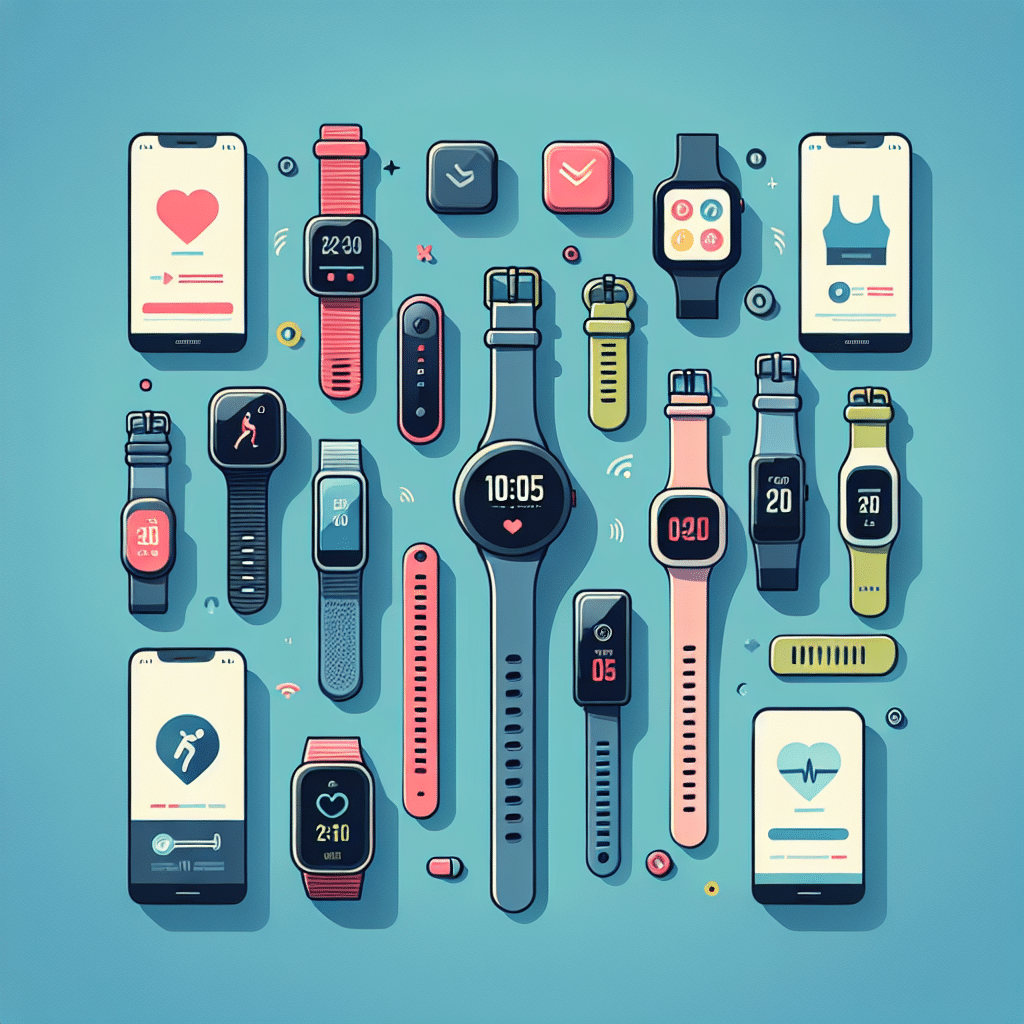The Rise of Activity Trackers
In recent years, activity trackers have revolutionized the way people engage with their fitness and health. These wearable devices not only monitor physical activity but also serve as an extension of our smartphones, providing seamless integration for a connected lifestyle. As consumers seek smarter ways to manage their health, the demand for activity trackers compatible with smartphones has surged.
Key Features of Activity Trackers
1. Fitness Tracking
Activity trackers are equipped with sensors that monitor various physical activities, including steps taken, distance traveled, calories burned, and sleep quality. This data is vital for users aiming to achieve fitness goals, leading to enhanced motivation and commitment.
2. Heart Rate Monitoring
Many modern activity trackers come with built-in heart rate monitors. Continuous heart rate tracking helps users gauge the intensity of their workouts, allowing them to optimize training sessions. Additionally, some models provide alerts for elevated heart rates, which can be crucial for health monitoring.
3. GPS Functionality
GPS-enabled activity trackers offer real-time location tracking, making them perfect for outdoor enthusiasts. Users can map their runs, cycles, or hikes, allowing for better route planning and performance analysis. This feature is often linked to smartphone apps for comprehensive tracking and sharing capabilities.
4. Smart Notifications
Seamless smartphone integration allows activity trackers to deliver notifications directly to the wrist. Users can receive calls, texts, and app alerts without having to reach for their phones, ensuring they stay connected even during workouts.
Popular Activity Trackers
1. Fitbit Charge 5
The Fitbit Charge 5 is hailed for its comprehensive features that cater to fitness enthusiasts. It includes built-in GPS and advanced health metrics, such as SpO2 and stress management scores. The device syncs effortlessly with the Fitbit app, providing deeper insights into health trends and fitness goals.
2. Apple Watch Series 7
Recognized for its advanced technology, the Apple Watch Series 7 not only tracks physical activity but also integrates intelligent features like ECG monitoring and blood oxygen tracking. Its compatibility with the iPhone allows users to manage workouts, receive notifications, and even respond to messages right from their wrist.
3. Garmin Forerunner 245
The Garmin Forerunner 245 is designed for serious runners. Its built-in GPS and extensive metrics allow for detailed performance analysis. The Garmin Connect app enhances the user experience by providing insights and community challenges, making fitness more engaging.
4. Samsung Galaxy Fit 2
Samsung’s Galaxy Fit 2 is a budget-friendly option that offers basic fitness tracking features. It seamlessly integrates with Samsung Health, allowing users to track their progress and earn achievements, all while receiving smart notifications.
Compatibility Across Different Platforms
1. iOS Compatibility
For Apple users, compatibility with iOS devices is crucial. Most premium activity trackers, like the Apple Watch, enable seamless synchronization with iPhones. Users can manage health data through the Health app, integrating information from other compatible devices to create a comprehensive profile.
2. Android Compatibility
Android users have a wide range of options, with devices like Fitbit and Garmin providing robust app support for Android smartphones. This versatility makes it easy for users to sync their activity data, track progress, and set reminders, regardless of the device’s brand.
3. Third-Party Integration
Some activity trackers take integration a step further by supporting third-party apps. For instance, devices that work with MyFitnessPal or Strava can enhance tracking capabilities, allowing users to sync nutrition data and join social fitness challenges.
Battery Life Considerations
Battery life is a crucial aspect of choosing an activity tracker. While some devices require daily charging, others can last several days or even weeks on a single charge. Users should consider how often they’re willing to charge their devices, as well as the intensity of their tracking needs. For example, GPS usage can drain battery life significantly, which is a consideration for long-distance runners.
Aesthetics and Wearability
Activity trackers are often worn throughout the day, making design and comfort essential. Brands frequently release sleek models that can blend into everyday wear, transitioning from workout attire to casual clothing seamlessly. Finding a tracker that suits personal style can improve the likelihood of consistent usage.
The Health Benefits of Activity Trackers
1. Promoting Physical Activity
With constant monitoring and feedback, activity trackers encourage users to engage in physical activity. Many devices include reminders to move or challenge users to meet daily step goals, fostering a more active lifestyle.
2. Insights into Sleep Patterns
Understanding sleep quality is fundamental to overall wellness. Activity trackers equipped with sleep tracking features analyze sleep patterns, allowing users to make adjustments for better rest. This is particularly advantageous for those aiming to establish healthier sleep habits.
3. Mental Health Awareness
Fitness trackers can support mental health by providing data that encourages mindfulness and focus on well-being. By tracking stress levels and promoting relaxation techniques, these devices contribute positively to users’ mental health as well.
Choosing the Right Activity Tracker
When selecting an activity tracker, users should consider specific requirements such as fitness goals, design preferences, and desired features. While some may want comprehensive health metrics, others might prioritize basic activity tracking and sleep monitoring. Assessing these factors can help tailor the right choice to individual needs.
Future Trends in Activity Trackers
Looking ahead, the activity tracker market is poised for innovation. Anticipated advancements include improved battery life through energy-efficient technology, enhanced sensors for more accurate health data, and increased integration with smart home devices. The evolution of AI and machine learning promises to revolutionize how data is processed, paving the way for smarter health monitoring solutions.
Conclusion
The growing assortment of activity trackers compatible with smartphones reflects a shifting focus towards integrated health management. By providing real-time data and insights, these devices empower individuals to take control of their health and fitness journeys. As technology continues to advance, staying connected while active will only become more seamless and effective.
